A classic suit should be in every man's wardrobe, so it is important to know how to choose or sew it yourself. Trends often come back. This also applies to the fashion for classic men's suits. They allow you to look respectable and elegant at any event. At the same time, a business suit can emphasize a person's status and his willingness to negotiate. Today's material examines in detail how custom-made men's suits are made, what materials are best for this and how to choose a style for a specific person.
Distinctive features of men's suits
One of the first features is that a tuxedo jacket can be single-breasted or double-breasted. The first option is universal and suits any figure. The color of a business suit can also be completely different and often depends not only on preferences, but also on the purpose of wearing it, the time of year. For example, in winter, preference should be given to blue tones and dark shades, and in summer, accordingly, to lighter ones. Some believe that blue is ideal for men in leadership positions.
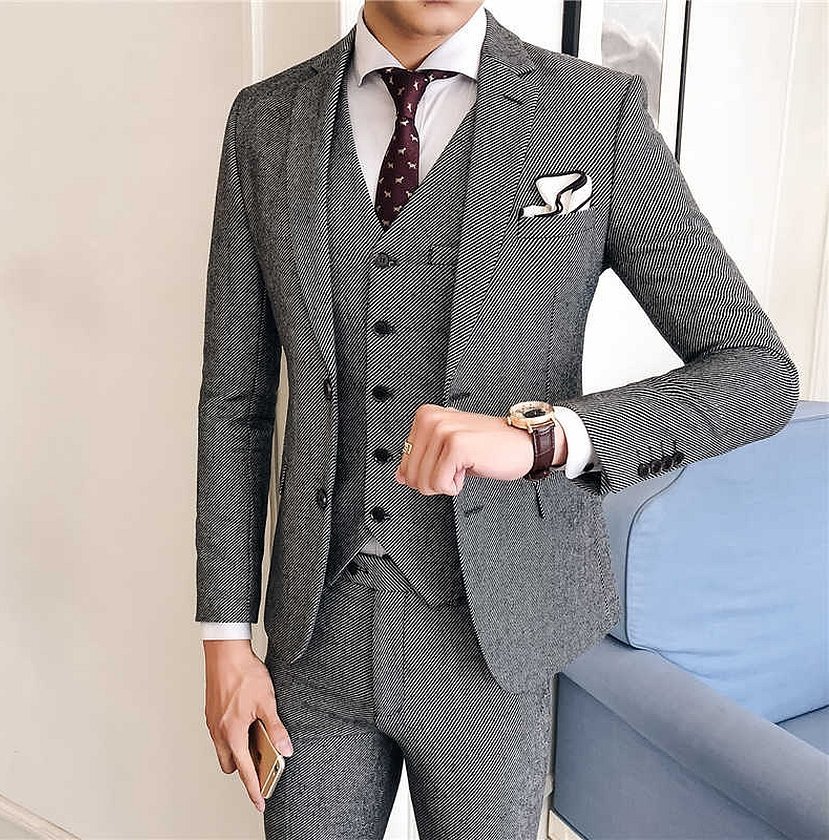
Important! Blue suits should be worn for negotiations and other formal events. For everyday wear, brown clothes of various shades are suitable. This, as experts in this field explain, inspires trust and respect from subordinates.
Attention should also be paid to the gray color, the number of shades of which is amazing. Anyone can choose a suitable option. You should be careful when choosing checkered jackets and trousers, as they do not suit everyone. A large check will be a win-win option for a tall and thin man.

There are a huge number of fabrics used to make suits today, and this is another feature. The cost of the finished product directly depends on this. Popular options remain 100% cashmere or wool, but they are gradually being replaced by synthetics, which are almost indistinguishable from natural materials. Below we will talk about the materials in more detail.
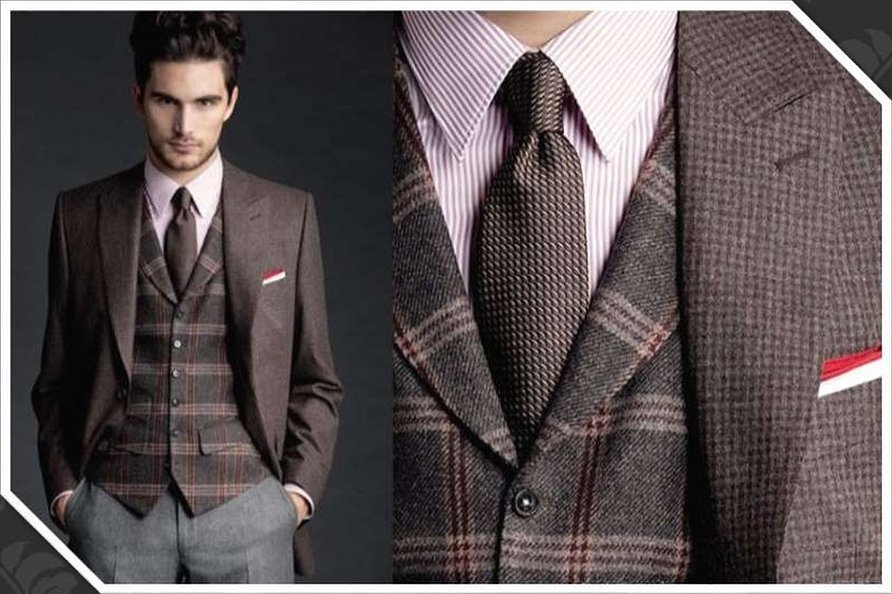
Materials
The most popular materials for sewing men's suits are:
- Wool. The highest quality and most expensive items are made of wool, as it is durable and expensive. Suits made of it do not wrinkle and retain body heat perfectly. They are not as hot in the summer as cotton ones;
- Blended fabrics with wool. This could be, for example, wool with lycra. Due to the blending, wool acquires new qualities of another material and does not lose its own. The option from the example is even easier to care for than pure wool;
- Cashmere. Often used for the cold season. Quality material will last more than 10 years and will not lose either its properties or appearance. Cashmere is pleasant to the touch and retains heat well, but is quite expensive to buy;

- Cotton, linen and their mixtures. Well suited for summer and warm seasons. Such fabric is light and hygroscopic. The cut of such clothes allows you to wear them even with T-shirts, which is good for everyday walks and non-business meetings and, at the same time, bad for official negotiations and work. There are also several disadvantages: such clothes quickly wrinkle and do not fit the figure;
- Velvet, boucle, corduroy. Suits with a great appearance that are bought only for that. The fabrics themselves are not very different in quality, but they look quite eccentric;
- Wool and silk. The most expensive option. The fabric is very light and flowing, a person's movements are not constrained, and the fabric retains its presentable appearance for a long period of time.

Stages of costume creation
After choosing the fabric and additional materials, the process of creating the costume begins. To do this, choose a style, take measurements, make patterns or buy them, and then start sewing.
Choice of style
The style is chosen based on the silhouette of the man's figure. There is a rule: a correctly sized garment will make the silhouette of the figure beautiful, elegant and fit. The rule applies to all types of clothing: from T-shirts to jackets. Regardless of the style, any jacket and trousers will suit a man if they fit him well and are tailored as if for him. This will hide all the flaws of the figure and noticeably highlight its advantages. That is why a custom-made suit will be the best, although not the cheapest, choice.
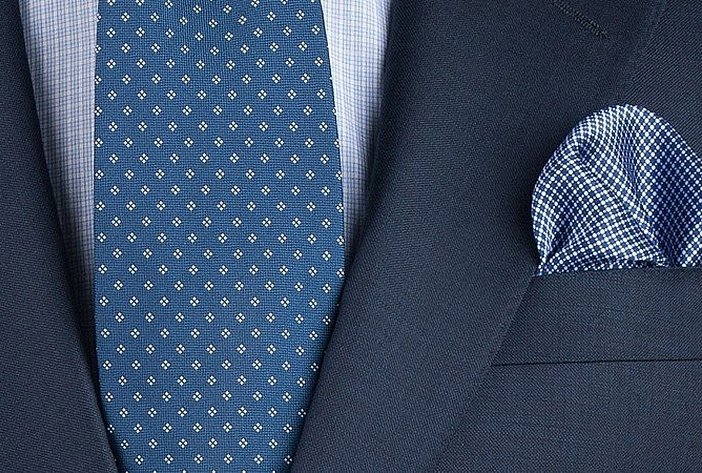
The silhouette determines how the future product will look: fitted, with natural or wide shoulders, with narrow or classic lapels, longer or shorter.
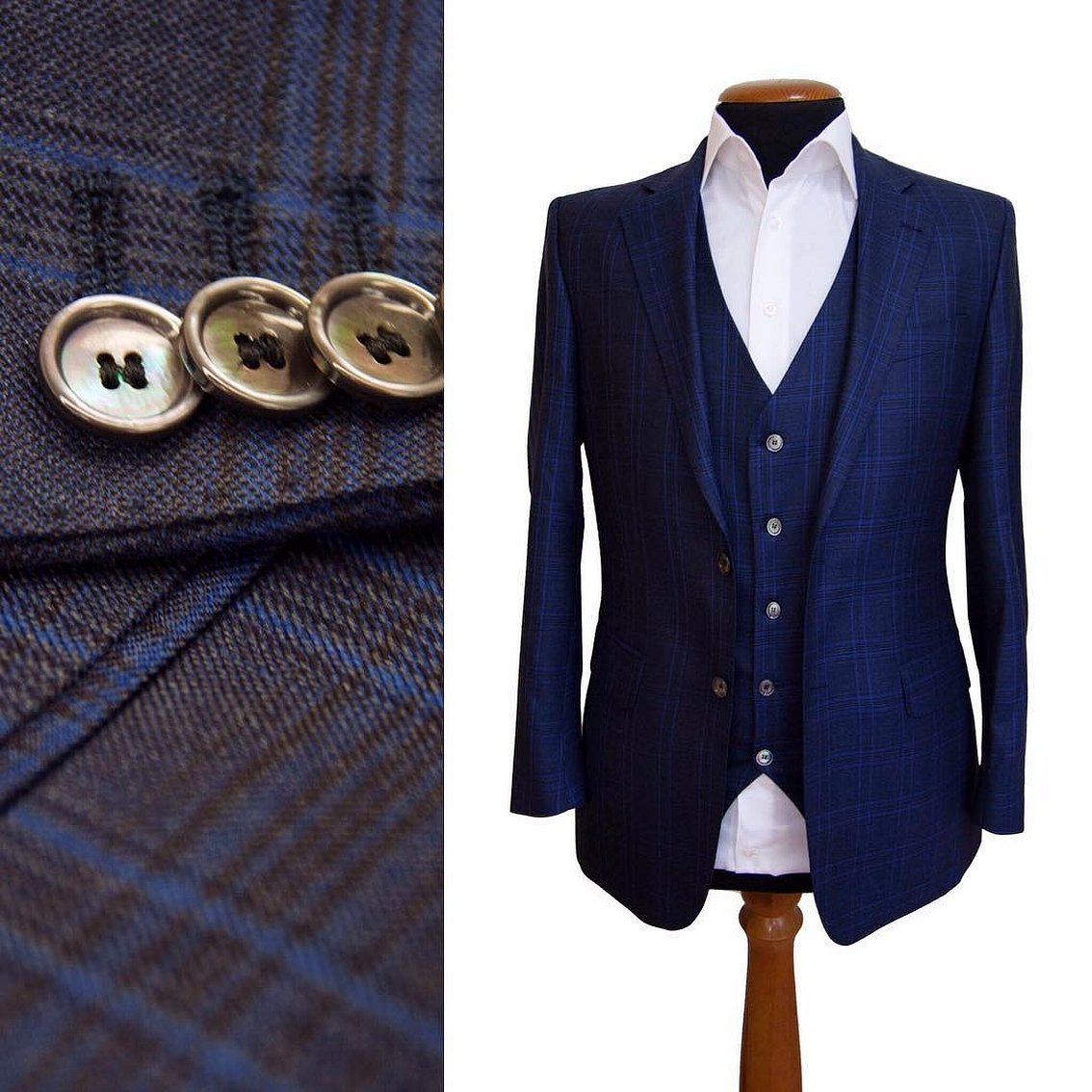
Taking measurements
Measurements are very important: depending on the features of a person's structure, various dimensional features change. The person from whom measurements are taken should stand or sit upright and be completely relaxed. The measurements that need to be taken are the following:
- Half neck girth - NG;
- Half chest circumference - OG;
- Half waist circumference - WC;
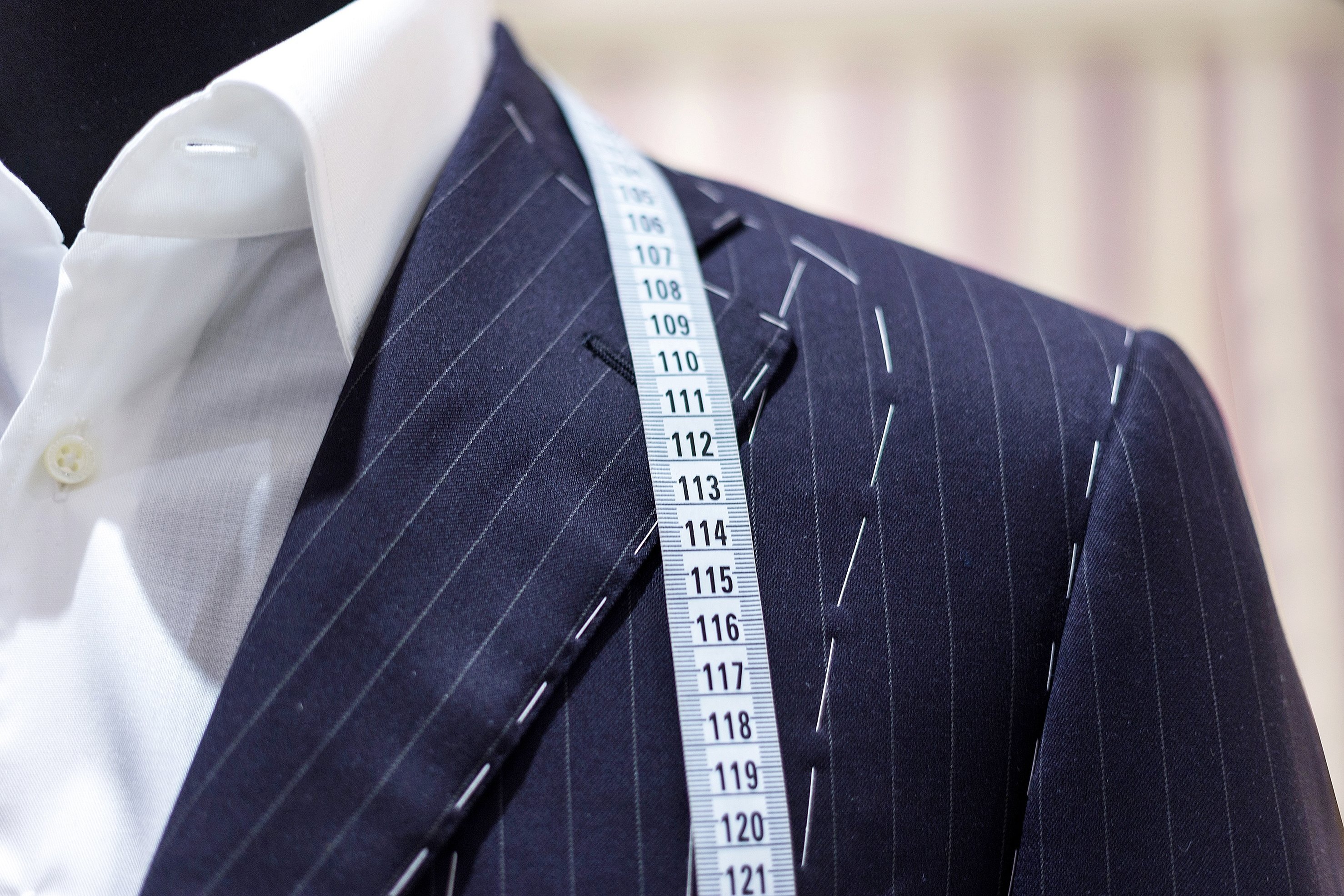
- Half hip circumference - HC;
- Back width - ШС;
- Chest width - W;
- Shoulder slope width - ШП;
- Waist length - LT;

- Product length - DP;
- Back armhole depth - GPS;
- Sleeve length - DR;
- Length on the side - DO;
- Step length - L/S;
- The length of the vest neckline is DVZh.
Important! The difficulty in measuring the width of the back is that a person does not have clear boundaries for the articulation of the arms. That is why it is recommended to lay folds on the individual's shirt and press them to the armpits.
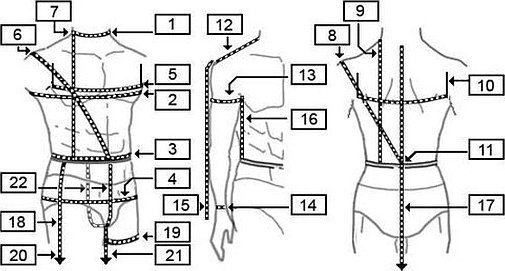
Patterns
After taking measurements, you need to start building a pattern. You can order or buy it, or you can make it yourself or find it on the Internet. The pattern is built according to a specific plan or diagram using the measurements that were taken earlier. Below are several ready-made diagrams.

Sewing
If the pattern is done, then they start sewing. It is advisable for a beginner to try his hand at unnecessary or cheap fabric, and then move on to expensive and high-quality. For sewing, the pattern is divided into parts that are cut out of the fabric and sewn together according to certain rules and sequences.
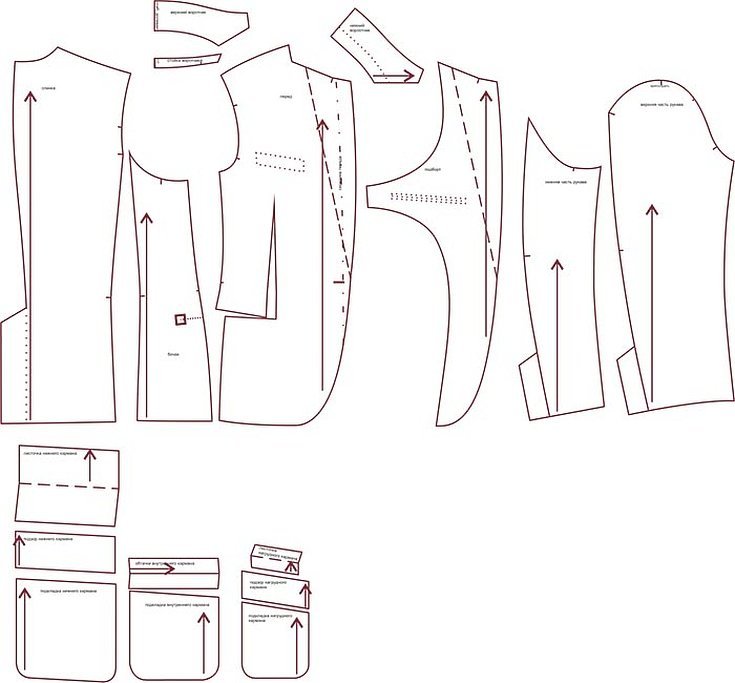

How custom tailoring works
To create a quality men's suit, specialists and seamstresses take about 36 measurements and take photos of the client in several projections. Some tailors adjust the measurements to the customer, but it is better to do everything individually. To facilitate cooperation, some experts save the data and measurements and use them for the next order for sewing clothes.

In general, custom tailoring of clothes involves step-by-step actions:
- Determining measurements and sizes. All measurements are taken and recorded using a tape measure. This task should be entrusted to a professional;
- Defining the project. After this, a style suitable for a certain person is determined, a pattern is created and the suit is sewn. If the person is satisfied with everything, then the temporary seams are replaced with regular ones.
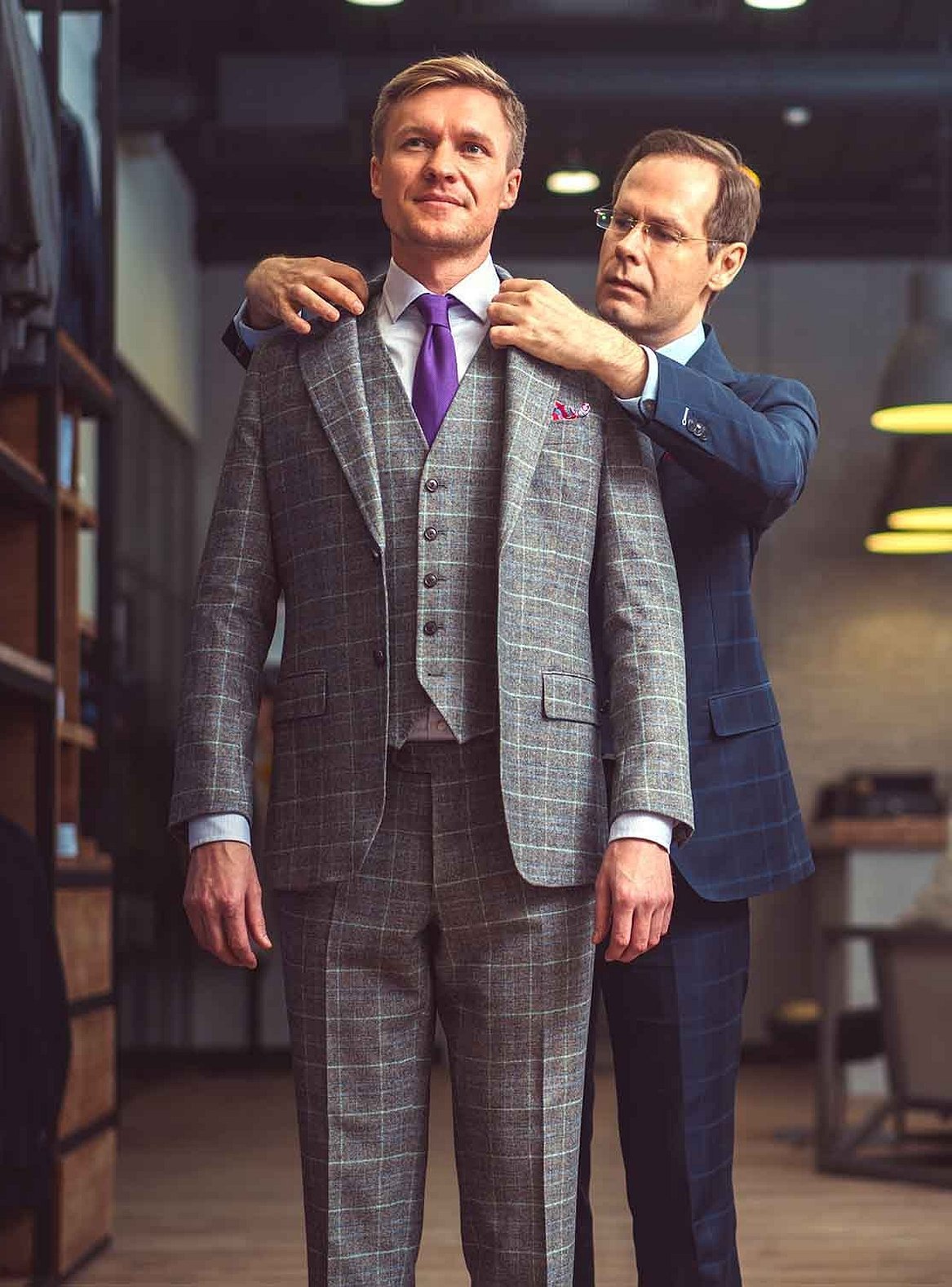
Important! Custom tailoring, whether done by yourself or by a craftsman, can take about a week or two. During this time, everything should be carefully checked and prepared so that the final product is of high quality and stylish.
What does the price consist of?
The final cost of a men's suit is determined by the following criteria:
- Quality and brand of fabric for sewing;
- The twist density of the thread in the fabric;
- Fabric thickness. The thinner the material, the more expensive it is;
- Method of sewing the product: glued, stitched, semi-stitched;
- Product style: “three” will be 30% more expensive than “two”;
- Completion time. If the sewing is ordered from specialists, then the deadline will also determine the price: the shorter it is, the higher the price, respectively.

Thus, sewing a suit is not the easiest thing. Sewing men's clothing and, in particular, jackets takes more than one day and requires certain skills from a seamstress or tailor. If a novice craftswoman is not yet familiar with such complex patterns, it is better to contact a studio, where they will make a figured outfit in a short time from the selected fabric. This can be knitwear, cotton or expensive wool. You can also watch master classes on the Internet or go to one of these MK in person, where they will teach you how to sew in accordance with quality samples.




